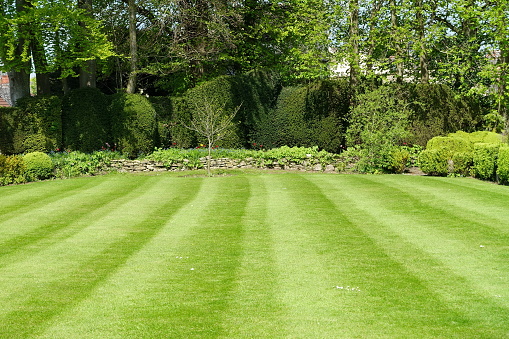Aerating your lawn is beneficial for a variety of reasons. It can improve the health and appearance of your grass, especially if you have an unevenly-thin lawn. However, if you want to get the best results, timing is essential. Performing aeration at the wrong time of year can harm your lawn, so consider the season and weather conditions when planning this task.
Good time of year to aerate your lawn
A good time of year to aerate your grass is when it is not too dry or too wet. A well-tended lawn will feel soft and moist, while a dense, compacted lawn will feel hard and dry. Aeration will increase the soil’s moisture content and softness, helping grassroots access water and nutrients.
Depending on your location, the best time of year to aerate your grass is late September or early October. It will allow the grass to recover before winter sets in. Also, be sure to aerate during the last week of August to the first two weeks of September – just before the first major rain.
Aeration is necessary to revitalize your lawn by creating holes in the soil. It will allow more water and oxygen to reach the roots, which will help them grow. Ultimately, aeration will result in a healthier, more vibrant lawn that will remain green throughout the year.
Plug removal creates space for your root system
When aerating your lawn, you may have noticed a layer of thatch under your grass. This layer comprises organic matter, which is full of nutrients. Plugs left in place after aeration creates space for this layer to break down and return nutrients to the soil below. Leaving the plugs in place after aerating your lawn helps your grass maintain its healthy condition.
Aeration improves the soil by increasing the oxygen, moisture, and nutrients in your lawn’s soil. It allows your roots to breathe, which will help them grow. A better-looking yard is the result of a healthy root system.
Plug removal is crucial in aerating your yard; removing plugs will leave your yard with more space for your root system. A spike aerator uses a spike or tine to poke a hole in the ground. However, it is less effective than plug removal, which may lead to additional compaction around the hole.
Proper technique
The best aeration method will help break up compacted soil and open the air pockets. About half of the soil in your yard consists of air pockets. When these air pockets get too small, it can affect the growth of your grass. Proper aeration allows the air pockets in the soil to expand, allowing more water and air to reach the grass roots.
Timing is one of the most important things to remember when aerating your lawn. The proper timing for aeration varies depending on the type of grass, soil, and usage habits. In general, you should aerate your yard at least twice every year.
You should also consider the type of grass you have and where you live, the best time to aerate your yard is when the grass is actively growing. Cool-season grasses thrive in cool temperatures in the spring and fall, while warm-season grasses thrive in late spring and early summer.
Using a screwdriver, carefully dig a section of your lawn about an inch square. Then, watch for a brownish layer underneath the green grass. This layer will signal the right time for aeration. Afterwards, you can remove the screwdriver and check if you need to repeat the process.
Aeration should be performed at least twice a year. During this time, mowing the lawn several times will be sufficient for the lawn to recover from the aeration. The process will create increased pore space, which means better air exchange between the soil layers. Proper timing is crucial, and the aeration should occur before the spring’s first frost.
A lawn can be regenerated by a professional lawn care service or by a homeowner with the proper equipment. The best technique depends on the type of grass you have and your area’s climate. Proper timing should coincide with your other lawn care activities.
Avoiding damage to your lawn after aeration
When you aerate your yard, it is essential to remember to follow a few simple rules to prevent damaging your lawn. First, don’t do aeration after heavy rain. It is because the lawn will be too wet to aerate effectively. You want to wait at least a day between heavy rain and aeration to let the moisture drain completely.
Aeration from https://www.yarddawgslawncare.ca/calgary/lawn-aeration also improves the health of your lawn by allowing oxygen and water to penetrate the root system. It also helps reduce the amount of thatch on your lawn. Thatch prevents nutrients from reaching the roots. Lastly, aeration helps promote sustainability by reducing the density of compacted soil and increasing water use efficiency.
Some tips to avoid damage to your lawn after aerating include using a screwdriver and keeping the soil moist. You can also use a pencil to check the depth of your soil by piercing it with a screwdriver. If it’s difficult to insert the screwdriver into the ground, your lawn needs aeration.
